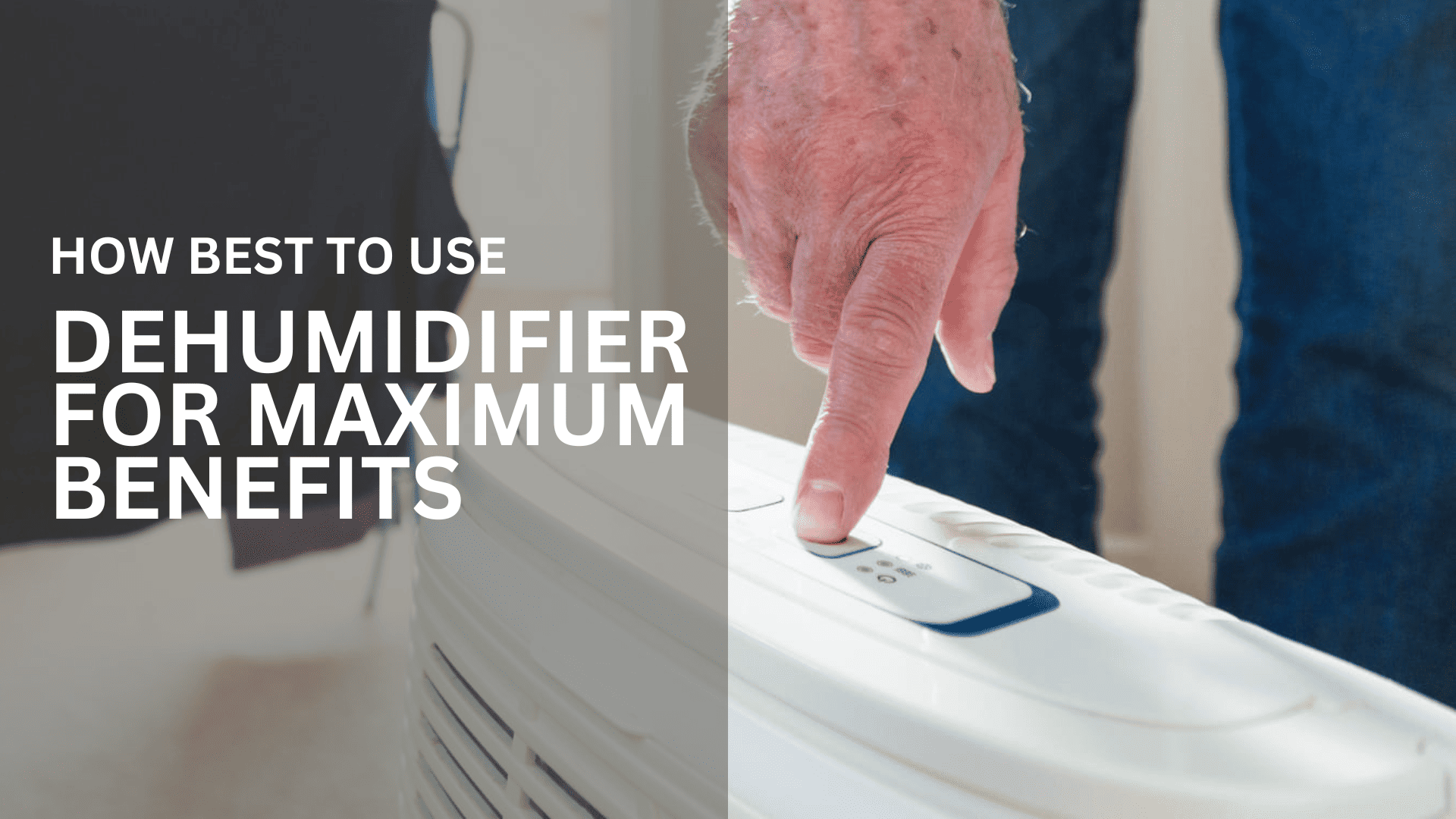One needs to adhere to certain steps and procedures to use a dehumidifier to yield maximum benefits. These include the proper placement and installation set-up of the dehumidifier, along with its adequate drainage and ventilation. Only by following the proper protocol will your dehumidifier regulate the humidity level at your workplace.
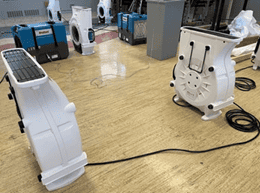
How To Use A Dehumidifier For The First Time?
If you are using the industrial dehumidifier for the first time in your workplace, and are at a loss about what to do and how to use dehumidifier effectively, let us take notes for you.
Unboxing And First-Time Precautions
When unboxing a dehumidifier, always make sure the packaging is undamaged. After opening, check all the necessary cords and accessories and go through the reader’s manual to check that all parts are present. In the case of a refrigerant dehumidifier, make sure to place the dehumidifier on a flat surface and lay it there for a few hours.
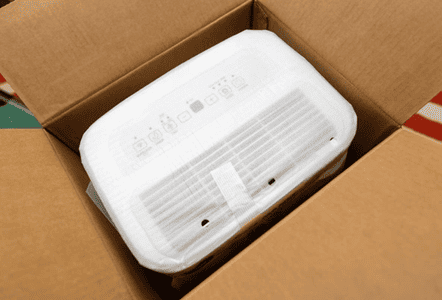
Choosing The Best Location
Choosing the most appropriate location for the dehumidifier is an unavoidable step for properly functioning it. To ensure airflow, it must be placed in a well-ventilated space with a few inches of gap from the wall. The center of your operational room is the best place to install a dehumidifier. Also, ensure the doors and windows are closed and not near the dehumidifier.
Set-Up The Drainage
A dehumidifier works on the simple principle of taking away the mixture from the air and condensing it into water. The water fills up the dehumidifier’s tank and is disposed of. There are two ways to dispose of that water: manually emptying the tank or attaching a water hose to the sewerage line to automatically dispose of it.
Whatever the drainage method according to your dehumidifier’s model, make sure that it is uninterrupted and direct. The water tank must be emptied regularly to attain the best performance. Also, the dehumidifier should be monitored to track its filling time. This will come in handy while troubleshooting your dehumidifier in the future.
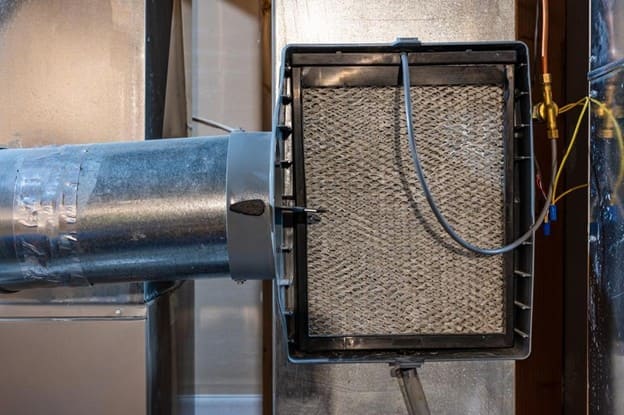
Plugging-In
Before plugging in the dehumidifier, you must check the voltage requirement and run it only at the recommended voltage. While plugging in, try to connect the power cord directly to the wall outlet and avoid extensions, as manufacturers often do not recommend them. If it is unavoidable to use an extension cord, ensure it’s compatible enough to handle the voltage.
Understand The Control Panel Working
Once the dehumidifier has been placed, set up, and plugged in, you need to turn it on and determine the necessary settings according to your usage.
Understanding the control panel settings is necessary to run the dehumidifier efficiently. While there may be some variation in the buttons and their placements according to the different models and brands, the main settings are almost the same. To have a clear idea of the settings, never skip reading the manual guide. Normally, a dehumidifier has a power on/off button, humidity adjustment, mode selection, and a timer.
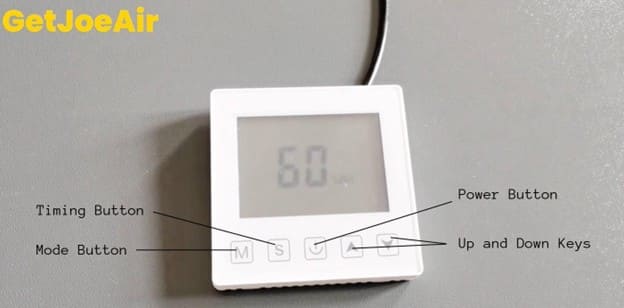
Set The Right Humidity Level
Now that your dehumidifier has been set up and turned on, the next step is to set the right humidity level. The ideal humidity level is necessary to ensure the well-being of your machinery and the freshness and right state of your finished products. The setting up of the right level is not a big deal. It can be easily done by adjusting the level with the humidity level button on the control panel. It must also be known that the dehumidifier must run 24/7 for at least 24 hours when used for the first time.
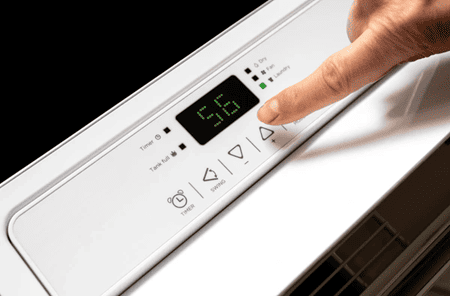
Monitor The Operation
Until here, your concern was the proper installation and working of the dehumidifier. Once it is up and running, you need to monitor it now and then to make sure it’s working properly. Keep a check on the water tank, empty it timely, and keep checking if it’s filled in due time or not. If you hear any unusual noise from the dehumidifier or any ice buildup on the coil, address the issue promptly and contact the manufacturers.
Follow the Proper Maintenance Regimen
Proper maintenance and cleaning of the dehumidifier are key to its long-term and efficient operation. The dehumidifier must be cleaned thoroughly at least once a month. Turn off and Unplug the dehumidifier prior to its cleaning. Take a damp cloth and clean the dehumidifier with it. Never use chemical-based solvents for this purpose.
Thoroughly clean and wash the air filters, and if the nature of your commercial activity involves any fur or yarn, etc, clean the air filters every two weeks. The tank must be emptied on time and cleaned thoroughly along with the coil each month to prevent mold growth.
Frequently Asked Questions (FAQs)
How To Use Dehumidifier In Basement?
The basements have high humidity as compared to the other parts of your workplace. Also, there is no proper ventilation there which increases mold growth. The best strategy in this regard is to use a dehumidifier to maintain the right humidity level in your workplace basements. Choose the right-sized dehumidifier and place it correctly with proper space for airflow. Set the humidity level to 40-50% to prevent mold and mildew growth. Try to place the dehumidifier in the center to acquire maximum results.
How Often To Use Dehumidifier?
The duration of use of the dehumidifier may differ according to different types of commercial activities. In general, running a dehumidifier for at least 10-12 hours a day is recommended to maintain the Relative humidity level in normal climatic conditions. However, if you reside in an area having high humidity or is a tropical or coastal region, you may need to run the dehumidifier for 18-20 hours a day.
How To Use A Dehumidifier For Water Damage?
The dehumidifier may come in handy in case of water damage, as long as it is not a major one. You need to set the dehumidifier in the center, closing all the exits and windows. Set the humidity level to the lowest setting. Turn on the fans so the air may circulate in the space, accelerating the drying process. Remember that it may take around 1 to 3 days to completely inverse the water damage provided the fans and dehumidifier are running continuously.
How To Use Dehumidifier In Winter?
The humidity level in winter is not that high. But if your industrial unit is in a high humidity region or the nature of the activity performed there is such that it increases moisture at your workplace or causes condensation in winter, you may need to use a dehumidifier in winter also. The only difference is that the hours of operation in winter are half of what they were in summer.
How To Use A Dehumidifier To Eliminate Mold?
A dehumidifier helps prevent mold by eliminating the excess humidity from the air, which is one of the main reasons for mold and mildew. It must be kept in mind that a dehumidifier cannot eliminate the existing mold in your workplace. It needs to be removed professionally. However, a dehumidifier helps in controlling the moisture level of the place and in turn helps in eliminating the main factor responsible for mold growth. The dehumidifier setting to prevent mold must be between 30-50% humidity.
How Much Does It Cost To Use Dehumidifier?
The cost of using a dehumidifier differs greatly depending on the size of the dehumidifier and its intended use. It depends on the duration of its work along with the wideness of the space where it is used. Also, the electricity rates of your country and the recommended voltage of the dehumidifier play a crucial role in determining the cost. You can opt for the models of the dehumidifier which have built-in energy-conserving settings that can lower your costs greatly.
Final Thoughts
This guide has surely answered your concerns regarding the first-time use of the dehumidifier. The placement, installation, and settings of the dehumidifier are not as tricky as they seem. Just the right placement with the right settings and you are good to go. If you feel yourself stuck or confused at any step, we are more than happy to help you out.

